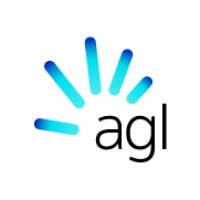Renewable Energy Jobs tagged "Remote Sensing"
-
Flexible Full Time 2 days ago
-
ExpiredMelbourne, AustraliaOn-site Contract Position More than 3 months ago
-
ExpiredFremont, California, United StatesOn-site Full Time More than 3 months agoUSD 75k–120k yearly
-
ExpiredBengaluru, IndiaFlexible Full Time More than 3 months ago
Remote Sensing in Renewable Energy
Remote sensing is a critical technology in the renewable energy sector, providing valuable data and insights for various applications. It involves the use of satellite or aerial imagery to collect information about the Earth's surface, which is essential for planning, monitoring, and managing renewable energy projects.
Typical Responsibilities
Professionals working in remote sensing for renewable energy are responsible for analyzing satellite images and aerial data to assess potential sites for solar energy and wind farms. They also monitor environmental impacts and land use changes, ensuring compliance with environmental regulations. Additionally, they may develop models to predict energy production and optimize resource allocation.
Required Skills and Qualifications
A career in remote sensing typically requires a background in geospatial sciences, geography, or environmental science. Proficiency in geographic information systems (GIS) and remote sensing software, such as ERDAS IMAGINE or ENVI, is essential. Analytical skills, attention to detail, and the ability to interpret complex data sets are also crucial. Certifications in GIS or remote sensing can enhance job prospects.
Impact on Renewable Energy Projects
Remote sensing supports the growth and efficiency of renewable energy projects by providing accurate data for site selection and resource assessment. It helps in minimizing environmental impacts and optimizing the placement of renewable energy infrastructure, thereby enhancing project sustainability and profitability.
Industry Trends and Market Demand
The demand for remote sensing professionals is increasing as the renewable energy sector expands. The integration of machine learning and artificial intelligence in remote sensing is a growing trend, enabling more precise data analysis and predictive modeling. This technological advancement is driving the need for skilled professionals who can leverage these tools.
Career Opportunities and Pathways
Career opportunities in remote sensing range from entry-level positions, such as GIS technicians, to senior roles like remote sensing analysts and project managers. Professionals can advance to roles in project management or specialize in areas like environmental monitoring or climate modeling.
Examples of Real-World Applications
Companies like Planet Labs and Maxar Technologies are at the forefront of using remote sensing for renewable energy applications. For instance, they provide high-resolution satellite imagery to assess solar potential and monitor wind farm performance. Startups like Descartes Labs are also innovating in this space, using remote sensing data to optimize agricultural practices and reduce carbon footprints.
Challenges and Future Directions
Challenges in remote sensing include the need for high-quality data and the integration of diverse data sources. As technology evolves, there is potential for more advanced applications, such as real-time monitoring and automated data processing, which will further enhance the role of remote sensing in renewable energy.
Get Job Alerts
Get alerts for Remote Sensing jobs
Featured Jobs
Renewable Energy Blog Posts
-

Renewable Energy Forecast for 2030
By 2030, renewables are poised to supply nearly half of global electricity, with solar and wind leading this explosive expansion. In this data-driven piece, we explore job creation forecasts, supply chain bottlenecks, and policy hurdles. -

Fastest Growing Renewable Energy Sector: Data and Trends
In 2023, solar photovoltaics surged by 32.59%, officially making it the fastest-growing renewable energy source worldwide. Yet offshore wind, which soared by 57.87% in 2021, remains a formidable competitor in total electricity output due to its high capacity factor. This concise overview highlights how policy incentives, cost reductions, and manufacturing advances are propelling solar to the forefront of the global energy transition. -

Career Opportunities in Solar Energy
The solar energy sector is experiencing unprecedented growth, with over 7.1 million jobs in solar PV alone as of 2023. For professionals considering a career shift into renewable energy, solar offers pathways across R&D, manufacturing, project development, and operations.










